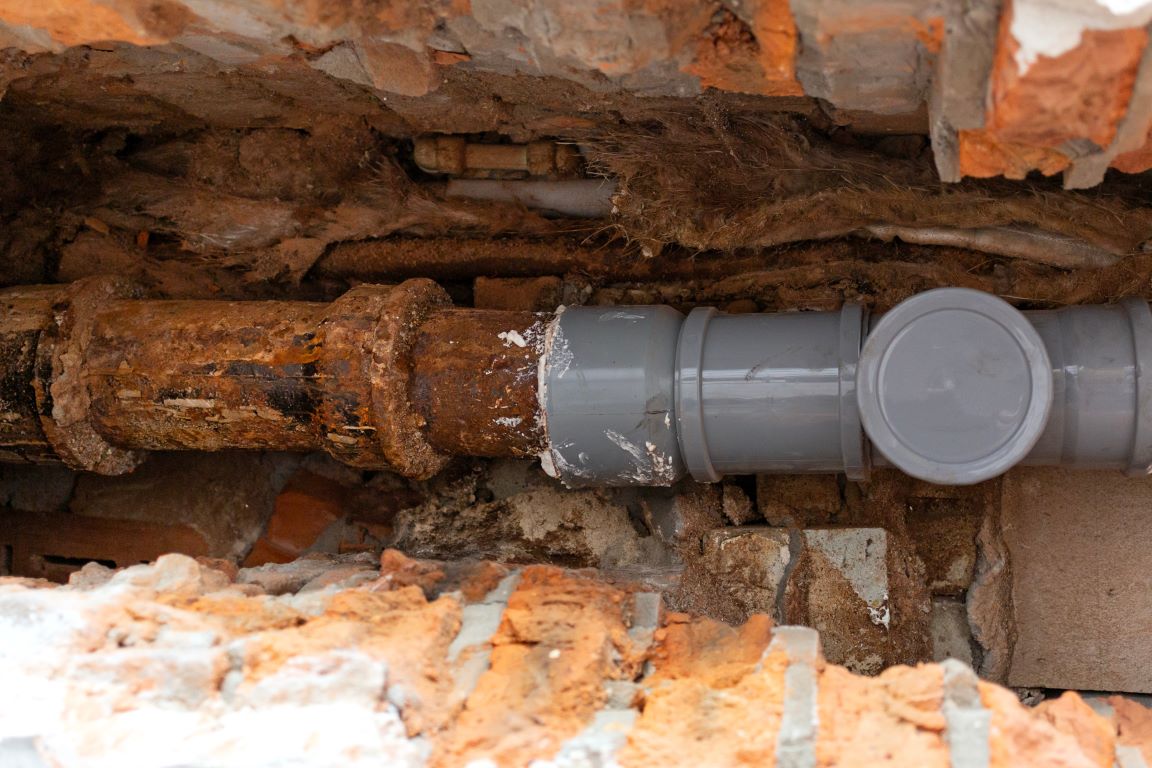Dealing with a broken sewer line is one of the most unpleasant experiences a homeowner can face. Not only can it cause significant damage to your property, but it can also lead to hefty repair bills. Being aware of the common causes of sewer line damage can help you prevent these issues and maintain a working plumbing system. Let’s go ahead and look at the five most common causes of a broken sewer pipe.
1. Improper Sewer Line Installation
One of the primary causes of sewer line problems is improper installation. If your sewer line wasn’t installed correctly, it’s only a matter of time before you start facing issues. Improper installation can involve incorrect placement, use of substandard materials, or poor workmanship.
Possible Issues from Poor Installation
When sewer lines are not installed properly, they may not have the correct slope, which is necessary for the gravity-assisted flow of wastewater. Without the right slope, sewage can stagnate, leading to blockages and breaks over time. Moreover, if low-quality materials are used, the pipes may deteriorate faster than expected.
How to Prevent It
To avoid these problems, always hire a reputable, experienced plumbing professional for sewer line installations. Ensure that they follow local building codes and use high-quality materials. If you’re purchasing a new home, it’s a good idea to have a professional inspect the sewer lines before closing the deal.
2. Tree Roots in Sewer Line
Tree roots are another major culprit behind broken sewer lines. As trees grow, their roots spread out in search of water and nutrients. Unfortunately, sewer lines are an attractive source of water for these roots.
The Damage Tree Roots Can Cause
Roots can infiltrate even the smallest cracks in your sewer pipes. Once inside, they continue to grow, eventually causing significant blockages or even breaking the pipes apart. This problem is more common in older sewer systems made of clay or cast iron, which are more susceptible to root intrusion.
Preventative Measures
To prevent tree roots from damaging your sewer line, avoid planting trees and large shrubs near your sewer pipes. If you suspect tree roots are a problem, consider regular sewer line inspections. In some cases, installing a root barrier can help protect your pipes.
3. Sewer Pipe Deterioration Due to Age and Corrosion
Sewer pipes, like any other part of your home, have a finite lifespan. Over time, they can deteriorate due to age and corrosion, especially if they are made of materials like cast iron or galvanized steel.
Signs of Deterioration
Older pipes are prone to rust, corrosion, and general wear and tear. This can lead to leaks, cracks, and eventually, pipe failure. You might notice slow drains, foul odors, or even sewage backups in your home as a result.
Upgrading Your Pipes
If your home has older sewer lines, it might be worth considering an upgrade. Modern materials like PVC and HDPE are more durable and resistant to corrosion. Regular plumbing inspections can also help identify signs of deterioration before they become major problems.
4. Pipe Settlement
Pipe settlement occurs when the ground around your sewer line shifts or settles. This is often due to soil erosion, ground movement, or even nearby construction activities.
The Impact of Ground Movement
When the ground shifts, it can cause the sewer pipes to bend, sag, or break. This can disrupt the flow of wastewater and lead to blockages or leaks. Pipe settlement is particularly problematic in areas with loose or unstable soil.
Stabilizing the Situation
To mitigate the risk of pipe settlement, ensure that the ground around your sewer line is stable. This might involve soil stabilization techniques or reinforcing the area around the pipes. If you live in an area prone to ground movement, regular inspections can help catch early signs of settlement.
5. Pouring Grease and Debris Down the Drain
Many homeowners don’t realize the damage they can cause by pouring grease and debris down the drain. Grease, in particular, is a major cause of sewer line blockages and breaks.
How Grease Causes Problems
When hot grease is poured down the drain, it cools and solidifies, sticking to the walls of your pipes. Over time, this buildup can restrict the flow of wastewater and lead to blockages. Additionally, debris like food scraps, hair, and hygiene products can accumulate in the pipes, exacerbating the problem.
Keeping Your Drains Clear
To prevent these issues, never pour grease down the drain. Instead, dispose of it in a container and throw it in the trash. Use a drain strainer to catch food scraps and other debris, and avoid flushing anything other than toilet paper down the toilet. Regularly cleaning your drains with a mixture of hot water, baking soda, and vinegar can also help keep them clear.
Now That You Know How to Tell If a Sewer Line is Broken
Understanding the common causes of a broken sewer line can help you take preventative measures and avoid costly repairs. Improper installation, tree roots, pipe deterioration, ground settlement, and improper disposal of grease and debris are all significant contributors to sewer line damage.
Remember, regular inspections by a professional plumber can help catch potential issues early, saving you time, money, and a lot of headaches in the long run. And if you ever suspect a problem with your sewer line, don’t hesitate to call Ford’s Plumbing & Heating for a thorough evaluation and prompt repair.



















